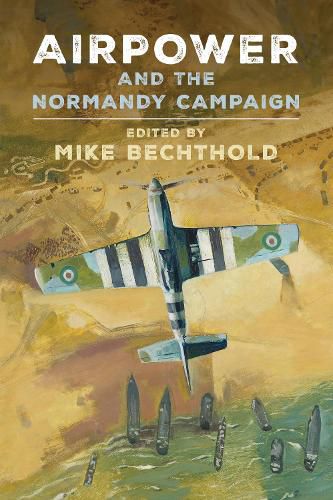Readings Newsletter
Become a Readings Member to make your shopping experience even easier.
Sign in or sign up for free!
You’re not far away from qualifying for FREE standard shipping within Australia
You’ve qualified for FREE standard shipping within Australia
The cart is loading…






This essential work reframes the conversation about airpower in Normandy and offers a deeper understanding of its role in the Allied victory. With fresh viewpoints for both scholars and practitioners of military history, comprehensive research and expert analysis inspire further debate and exploration on the enduring legacy of airpower in modern warfare.
During the spring and summer of 1944, air superiority was essential for the success of Operation Overlord. Allied air forces provided pivotal support across multiple domains, from the elimination of the Luftwaffe and the protection of the invasion fleet to the tactical air support that facilitated ground operations. Yet despite its undeniable significance, the role of airpower has often been overshadowed by the more conventional ground battles.
The nuanced scholarship in this collection delves into complexities of air operations in Normandy through both traditional military histories and emerging perspectives. Covering the roles of the Royal Air Force, the U.S. Army Air Forces, and the Luftwaffe, and with an international scope that incorporates British, American, Canadian, Australian, French, and German viewpoints, a core theme throughout is the integrated nature of Allied air, ground, and naval forces during the campaign. Using a joint or "purple" perspective, the contributors highlight the interservice collaborations and the tensions that arose between them, pointing out the operational dynamics essential to the overall success of the invasion.
Several case studies critically assess the successes and failures of airpower during the landings and the subsequent fighting and offer in-depth analyses of specific air operations, such as the bombing raids in the early days of the invasion, the attack on Cherbourg, and the effectiveness of U.S. heavy bombers in Operation Cobra. The impact of airpower on French civilians, particularly from bombing campaigns, is another key theme, underscoring the complex consequences of wartime aerial bombardment.
$9.00 standard shipping within Australia
FREE standard shipping within Australia for orders over $100.00
Express & International shipping calculated at checkout
This essential work reframes the conversation about airpower in Normandy and offers a deeper understanding of its role in the Allied victory. With fresh viewpoints for both scholars and practitioners of military history, comprehensive research and expert analysis inspire further debate and exploration on the enduring legacy of airpower in modern warfare.
During the spring and summer of 1944, air superiority was essential for the success of Operation Overlord. Allied air forces provided pivotal support across multiple domains, from the elimination of the Luftwaffe and the protection of the invasion fleet to the tactical air support that facilitated ground operations. Yet despite its undeniable significance, the role of airpower has often been overshadowed by the more conventional ground battles.
The nuanced scholarship in this collection delves into complexities of air operations in Normandy through both traditional military histories and emerging perspectives. Covering the roles of the Royal Air Force, the U.S. Army Air Forces, and the Luftwaffe, and with an international scope that incorporates British, American, Canadian, Australian, French, and German viewpoints, a core theme throughout is the integrated nature of Allied air, ground, and naval forces during the campaign. Using a joint or "purple" perspective, the contributors highlight the interservice collaborations and the tensions that arose between them, pointing out the operational dynamics essential to the overall success of the invasion.
Several case studies critically assess the successes and failures of airpower during the landings and the subsequent fighting and offer in-depth analyses of specific air operations, such as the bombing raids in the early days of the invasion, the attack on Cherbourg, and the effectiveness of U.S. heavy bombers in Operation Cobra. The impact of airpower on French civilians, particularly from bombing campaigns, is another key theme, underscoring the complex consequences of wartime aerial bombardment.